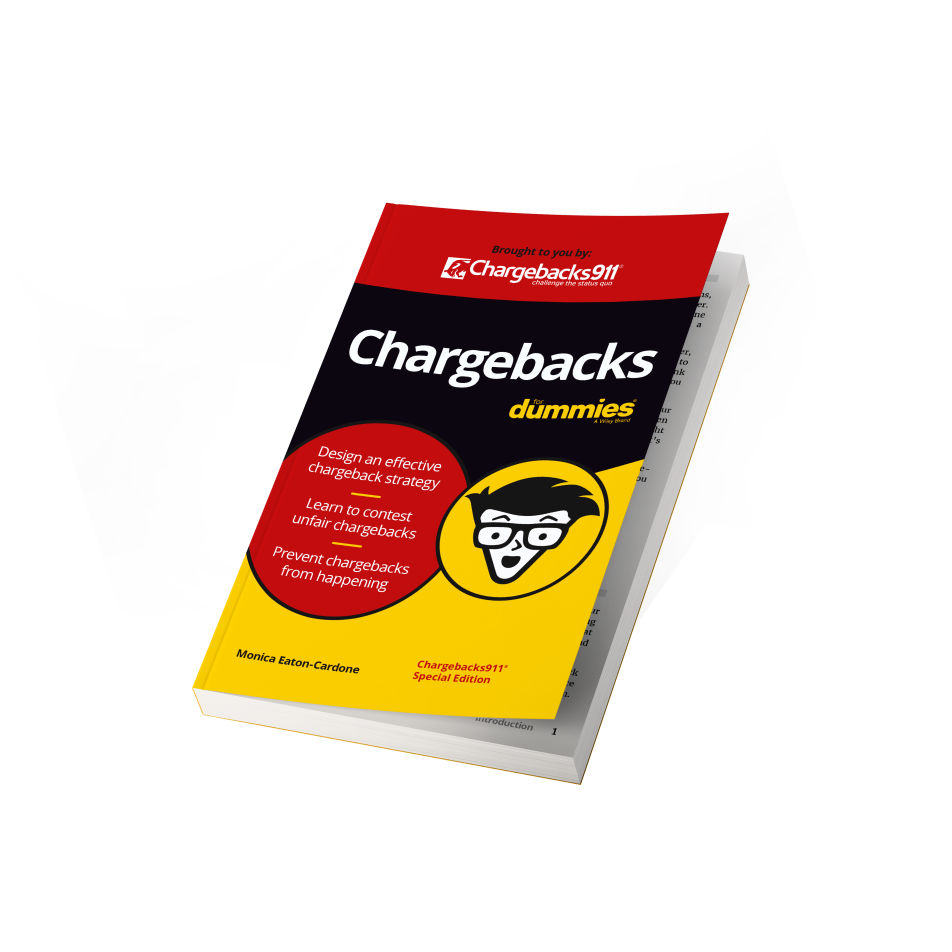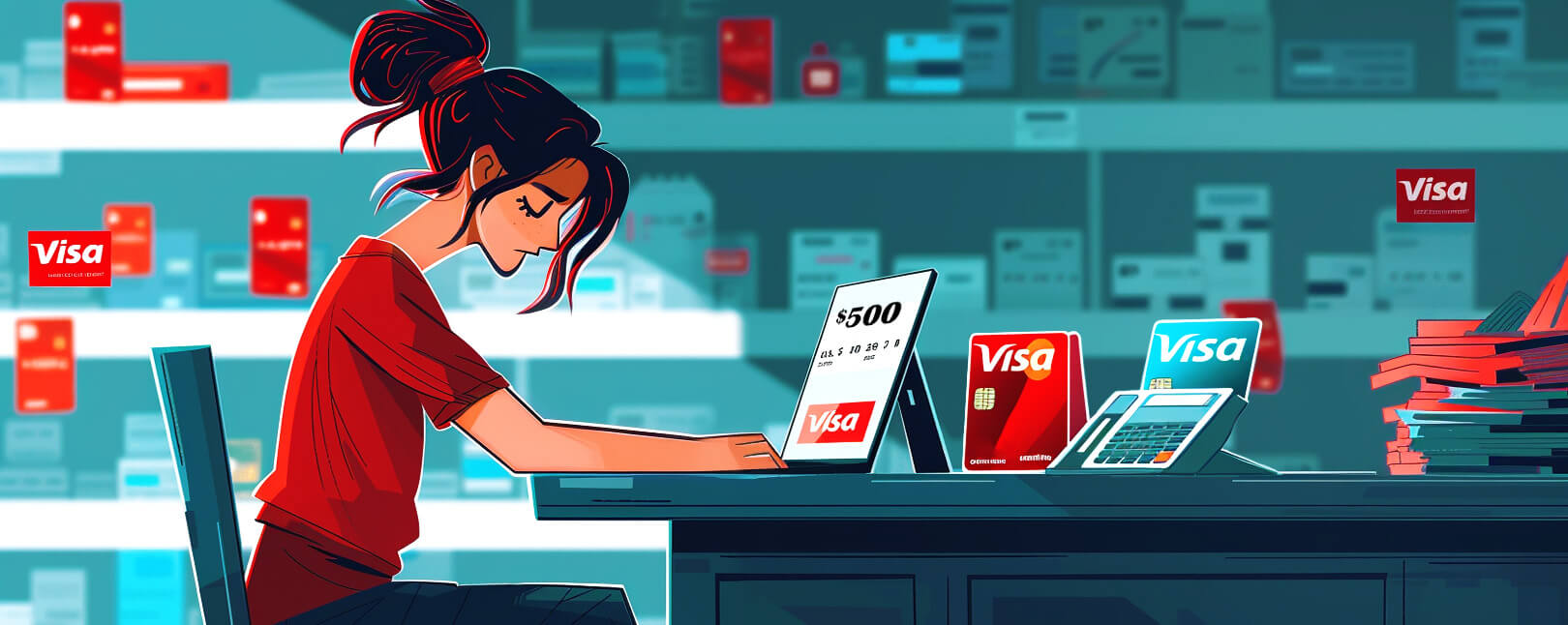Understanding Visa Chargeback Rules & Dispute Requirements
Merchants have some 3.8 billion reasons to accept Visa payments. That’s how many cards the company has in circulation, making the ability to accept Visa payments an important factor in a merchant’s success. This is particularly true for online businesses.
That said, the privilege does come with stipulations, including a customer’s right to dispute transactions they feel are invalid. These chargebacks can frustrate merchants, especially when they believe the sale was legitimate.
The chargeback system definitely favors cardholders, but all parties must adhere to a set of statutes that make the process a little more equitable. This post will examine Visa dispute rules: what they are, how they work, and how the card network is—and isn’t—involved with the dispute process as a whole.
Recommended reading
- Visa Debit Chargebacks: Here’s Everything You Need to Know
- Visa Acquirer Monitoring Program: Major Updates to VAMP
- Visa Chargeback Time Limits: The 2024 Guide
- Visa Authorization Rules: Changes to Time Frames & Options
- Visa Chargeback Fees: 8 Tips to Help You Cut Dispute Costs
- Visa Resolve Online: The Guide to Manage Disputes With VROL
What is a Visa Dispute?
If you’re reading this article, you probably already have a good idea of what a chargeback is. Just in case, though, we’ll do a quick rundown here.
Chargebacks provide a way for cardholders to recover their funds in cases of fraud or abuse. The Fair Credit Billing Act of 1974 mandates that all card networks must provide this option, but the law doesn’t offer a lot of specifics. That’s why card networks like Visa each developed their own rule sets.
Pre-Dispute
Dispute
Dispute Response
Pre-Arbitration
Final Decision
The processes for each card brand are similar in a lot of ways. They all have to cover the parameters set forth in the law. At the same time, no two are exactly alike. One important difference in Visa’s guidelines is terminology, which differs from other networks.
| General/Old Term | New Defined Term |
| Chargeback | Dispute |
| Representment | Dispute Response/Pre-Arbitration |
| Chargeback Reversal | Dispute Reversal |
| Representment Rev/Adjustment | Dispute Response Reversal |
For the most part, we will use Visa’s naming conventions throughout this article.
Pre-Dispute
Visa Dispute Copy Requests
Let’s say a Visa cardholder feels a mistake has been made on their monthly statement. Visa cardholder rules say they should contact the merchant for an explanation. More than likely, however, the customer will simply flip their card over and call the toll-free number on the back.
In some cases, the issuer may immediately initiate a formal dispute, especially for claims where the merchant failed to obtain authorization, did not capture a card imprint, or accepted an expired card.
For other disputes, the issuer should talk to the cardholder and try to resolve the dispute. Programs like Visa Order Insight may be able to block invalid disputes, or provide enough information to settle the issue.
Learn more about Visa Order InsightResponding to Visa Copy Requests
Sometimes, the issuer cannot remedy the situation with the information it has. In that case, the acquiring bank will likely be sent an electronic copy request (also known as a retrieval request).
If the acquirer has the necessary information, the bank may be able to answer the copy request on its own. If not, the request will be forwarded to the merchant, who must return a legible copy of the transaction receipt, along with other requested information.
It’s also possible for the card issuer to bypass the acquirer and request a copy of a transaction directly from the merchant. The merchant may respond to these non-official requests, but is under no obligation to do so.
Common Question
In responding to a copy request, is the receipt required to have a signature?
At one point, it was. In response to the COVID-19 pandemic, Visa has removed this rule and now encourages merchants not to require a signature.
Avoiding Visa Copy Requests
It’s important to respond to copy requests quickly and accurately. That said, it’s better if you can avoid receiving them at all. Best practices for reducing copy requests include:
Using Recognizable Business Descriptors
Unclear billing descriptors may make the cardholder think a legitimate transaction is fraudulent.
Providing Legible Receipt Information
Merchant logo, marketing messages, and return policies should all be placed so as not to obscure transaction information.
Monitoring Copy Requests
If the ratio of copy requests to total Visa sales (less returns and adjustments) is more than 0.5%, the merchant should review procedures.
Using Chip-Enabled Terminals
For brick-and-mortar stores, Visa recommends merchants install chip-enabled terminals to eliminate signature requirements.
Those are all vital steps to take to help avoid Visa disputes. As we’ll see, though, copy requests can also be avoided by creating effective return and refund policies.
Dispute
When Can Banks Issue Visa Disputes?
Minimizing copy requests is a great thing, but it will not stop all Visa disputes. That’s bad news for merchants, as each dispute will cost them the dollar amount of the transaction, plus the cost of merchandise and ancillary costs like shipping and dispute fees.
There’s nothing merchants can do to avoid disputes completely. That said, many disputes are the result of avoidable mistakes. The right steps can help reduce or prevent them.
It’s hard to learn the rules when they’re constantly changing.
We’ll do it for you and boost your ROI at the same time.

Visa Chargeback Workflows
Visa overhauled their chargeback reason codes after the implementation of Visa Claims Resolution in 2018. Visa has four dispute categories, and a reason code from one of these four categories must be attached to each claim:
Fraud
Unauthorized use of a payment card or account
Authorization
Authorization issues, such as not obtaining required authorization.
Processing Error
Errors made during processing, such as invalid card numbers.
Consumer Dispute
Cardholder claims regarding transaction or merchant issues.
Acceptable Reasons for Visa Consumer Disputes
Visa dispute rules limit the situations that qualify for a consumer dispute. To demonstrate, a Visa dispute could be allowed if:
An order was never received, or a service was not performed as expected.
The goods provided did not reflect what was promised.
A cardholder was charged for a service that was previously canceled.
If any of these reasons turn out to be true, the cardholder has a legitimate complaint. Visa systems will detect and block an invalid claim. Still, generally speaking, it is the issuer’s job to investigate customer issues and decide if a dispute is warranted.
Learn how banks investigate disputesVisa Dispute Time Limits
Timeliness is essential when responding to copy requests and disputes. Visa strictly defines a response time limit for each step of the chargeback cycle.
The deadlines are straightforward on the consumer side. From the original transaction or expected delivery date, Visa cardholders have no more than 120 days to file a dispute in most situations.
Acquirers who receive a copy request have 30 days to send a copy of the receipt back to the card issuer. That window applies even if the acquirer must request the information from the merchant.
This is an important point to keep in mind: Other parties, such as acquirers and processors, may also have actions to perform in the same timeframe. Either may move up deadlines to give themselves more time.
Each additional phase of the dispute has a 30-day deadline (unless the case goes to Arbitration, which has a 10-day window). If there is no response by the deadline, the merchant will lose the dispute.
Learn about Visa chargeback time limitsVisa Dispute Rules & Compliance
Sometimes, a problem between members is not covered under Visa’s formal dispute rules. To help resolve this type of violation, Visa has established the compliance process, which offers members another dispute resolution option.
The Visa compliance process can be used when all of the following conditions are met:
- A violation of the Visa Core Rules and Visa Product and Service Rules has occurred.
- The violation is not covered by a specific dispute right.
- The member incurred a financial loss as a direct result of the violation.
- The member would not have incurred the financial loss if the regulation had been followed.
Whichever party files the compliance issue must give the opposing member an opportunity to resolve the issue. This is referred to as pre-compliance. If the dispute remains unresolved, Visa will review the information presented and decide liability for the transaction.
Learn about Visa pre-compliance cases Dispute Response
Visa Disputes & Representment
Not all Visa disputes are valid. Some get filed without a valid reason. This is a practice called friendly fraud. When this happens, you have the option to fight the chargeback through a process called representment.
In broad terms, Visa chargeback representment refers to the process of fighting a chargeback. You literally “re-present” the transaction to the bank and card network, along with evidence to support your claim.
The first thing to take note of is the reason code attached to the Visa dispute.
Visa Chargeback Reason Codes
As a rule, “Fraud” and “Authorization” disputes enter straight into the “Pre-Arbitration” stage. Since these disputes come from the issuer, a merchant response is allowed only under certain conditions. For example, if:
- The cardholder no longer wishes to dispute the transaction
- A credit was already processed
- The dispute is proved invalid
Disputes with “Processing Error” or “Consumer Claim” chargebacks are different. Here, Visa guidelines allow for an additional round of responses (i.e. representment) before the case moves to Pre-Arbitration.
Learn more about Visa Reason CodesRules for Responding to Visa Disputes
There are strict rules governing this process, though. First, while you can draw from many different sources for evidence, whatever documents you provide must directly address the reason code attached to the dispute case.
Second, you must also provide a rebuttal letter, which explains the reason for the dispute. You may also be required to include documents like a Chargeback Adjustment Reversal Request, a Chargeback Debit Advice Letter, depending on the circumstances.
Third, you must submit your documents in time.
Merchants must respond within 30 days of “day one” for each phase. In Visa’s case, day one is the day after each phase is initiated. Keep in mind, however, that the effective time limit may be much shorter than 30 days, as the bank must receive, review, and submit the documents in that timeframe. In many cases, the bank may expect your complete response within one week or less
Learn about representment Pre-Arbitration
Visa Dispute Pre-Arbs
In some cases, the issuer may not accept your re-presented transaction. They may reject your case by filing a pre-arbitration.
Pre-arbitrations, or “pre-arbs,” are sometimes referred to by different parties as pre-arbitration chargebacks. This is incorrect terminology, though. According to Visa, pre-arbitration is the correct term.
Pre-arbs usually happen because the issuer reviews the reason code and finds that there was information which the merchant left out or falsified. For example:
- The representment submission was missing evidence.
- Evidence provided did not refute the buyer’s claim.
- Evidence provided was not acceptable per the reason code.
- The merchant did not include a rebuttal letter or other documents.
- Evidence was deliberately falsified and submitted as if it were real.
Whatever the case, the merchant has either made a mistake or forgotten to include crucial evidence that the cardholder could provide. In response, the bank submits a chargeback pre-arbitration.
Allocation Workflow Pre-Arbs
With pre-arbitrations in the “Allocation” workflow, acquirers and merchants have a limited ability to challenge. Certain conditions apply, and Visa only allows a 30-day timeframe (individual acquirers typically set even tighter deadlines).
Visa calls this the pre-arbitration phase. However, it consists of what would traditionally be considered representment and the pre-arbitration chargeback.
Collaboration Workflow Pre-Arbs
Pre-arbs that stem from either “Consumer dispute” or “Processing Error” chargebacks follow a process similar to that used by Mastercard.
Here, the issuer rejects the representment and submits a pre-arb attempt. The Acquirer may then either communicate with the merchant, or act independently, depending on the situation. They may submit a pre-arb response, or simply concede the dispute.
Dispute Response
Visa Chargeback Arbitration
Arbitration marks the final stage in the chargeback process. This happens because the parties involved are unable to reach a decision. So, Visa is asked to make a call.
There is a tight timeframe for this. If either party wants to escalate a dispute to arbitration, they must do so within ten days. Arbitration is also a costly option; the party found responsible could be on the hook for hundreds of dollars in fees.
Beyond arbitration, the only other option for merchants would be through legal means. Merchants can take customers to small claims court; however, this is the mostly costly and time-consuming option, and should be avoided whenever possible.
Learn about Visa ArbitrationVisa Dispute Limits for Merchants
It’s important for merchants to monitor their disputes using whatever data is available. Still, they should also be aware that Visa monitors all merchant dispute activity as well. There could be steep consequences for merchants who have too many chargebacks, according to the Visa chargeback policy.
Visa Chargeback Thresholds
The card network notifies acquirers if any of their merchants have excessive disputes.
Visa chargeback rules limit the number of disputes a merchant can receive. The company has established thresholds, and calculates dispute rates monthly to determine if a merchant’s chargeback situation falls into one of three categories:
Visa Dispute Monitoring
Merchants who reach or cross this threshold may be placed in Visa’s Dispute Monitoring Program (VDMP).
Entering the VDMP will mean higher fees, closer monitoring, and more restrictions. However, specific consequences will depend on the program level on which the merchant has been placed:
Learn about Visa dispute monitoringVisa Fraud Monitoring
Similar to VDMP, we also have the Visa Fraud Monitoring Program, or VFMP.
As the name implies, VFMP is an initiative administered by Visa. The program’s aim is to help merchants manage their criminal fraud risk and, in turn, protect the larger payments environment. Also like VDMP, the program has three key levels—warning, standard, and excessive. Which level applies to you is based on your Visa fraud rate.
Learn about Visa fraud monitoringIs Knowing the Rules Enough?
Visa chargeback rules and regulations can be confusing. They are also somewhat flexible, to reflect the ever-changing payments landscape. That said, failing to comply with Visa rules is no laughing matter. It could translate to substantial financial loss.
Merchants experiencing above-average numbers of Visa chargebacks need to work with their acquirer to develop a detailed dispute-reduction plan. Contesting invalid disputes through chargeback representment is essential, as are Visa chargeback prevention best practices.
That said, it takes a considerable amount of time to learn and keep up with constant changes to Visa chargeback rules. Every minute that a merchant spends focused on a credit card dispute is time not spent serving customers and growing their business.
Fortunately, Chargebacks911® offers the solution.
Our end-to-end chargeback management strategies help prevent disputes from happening, and recover revenue from chargebacks that do get filed. The result: greater ROI and long-term dispute reduction with a lot less hassle.
Don’t lose another dollar to a Visa dispute. Click below to see how much you could save.












